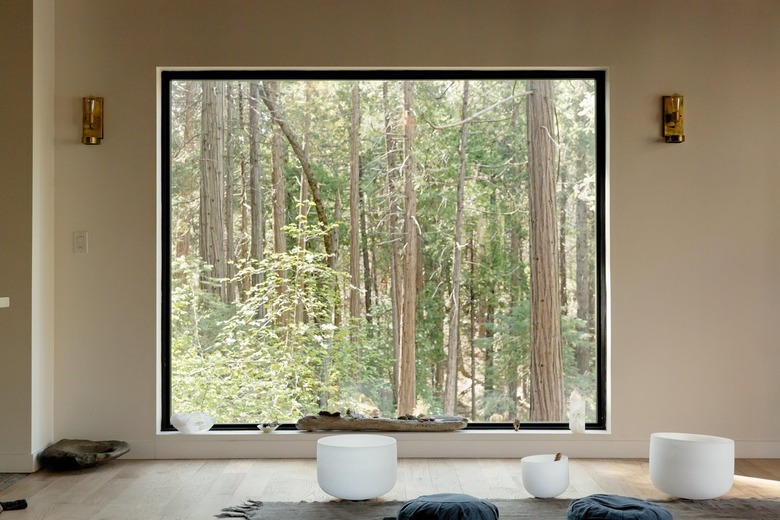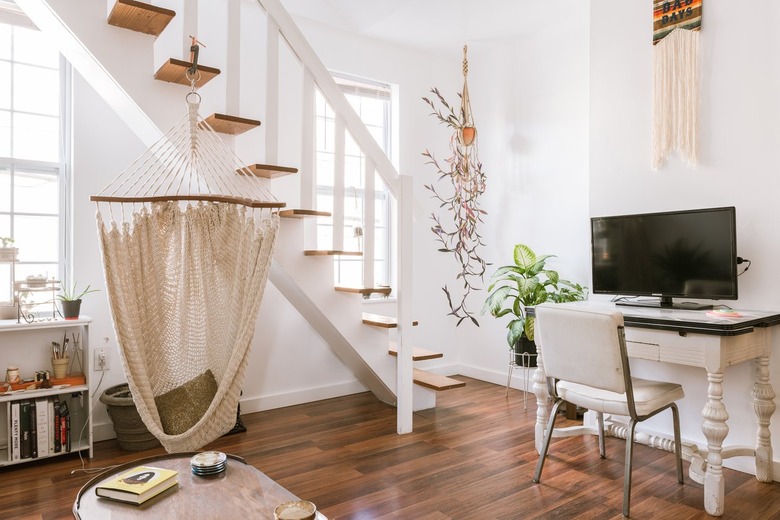What Is Biophilic Design?
If you've got a finger on the pulse of the design world, you've likely heard about biophilic design. It's a practice that focuses on infusing nature into built spaces in the name of health and wellness. It's also become increasingly popular in recent years — and for good reason, too.
"Throughout history, humans spent a lot of time outdoors," says Tara Miller, interior designer and founder of The Heartland Interior Design. "However, in today's society, people's natural habitat is mostly indoors." This was significantly amplified by the stay-at-home orders during the pandemic, which prompted an increased need for contact with nature, she explains.
What's more, people are now placing greater focus on the design of their spaces, as well as how those spaces can help their lives, explains Sally Augustin, PhD, psychologist and founder of Design with Science. This shift, coupled with our collectively high stress levels, has enhanced the interest in health-centric concepts like biophilic design.
But what does biophilic design mean, exactly? Ahead, discover the basics behind the practice, plus ways to bring it into your own home.
What Is Biophilic Design?
What Is Biophilic Design?
Biophilic design is based on biophilia. So, in order to understand the concept, it helps to know what biophilia means.
Biophilia is the idea that humans have an intrinsic need to connect with other forms of life, including nature — so much so that interacting with nature is essential to our physical, mental, and emotional wellness.
According to the publication The Practice of Biophilic Design, this concept is supported by human evolution. Consider this: Most of our evolutionary and developmental history took place before things like technology, large-scale farming, and cities came around. In other words, the human mind and body adapted to natural changes (rather than factors produced by humans) in order to survive. This suggests that our attraction to nature is a biological instinct.
Biophilic design works off of this theory. It aims to promote closer connections to nature — and therefore, support health and wellness — through our built environments. This is done via architectural, engineering, and design techniques that incorporate elements of nature.
Elements of Biophilic Design
Elements of Biophilic Design
Now, biophilic design isn't just about displaying a few plants and calling it a day. It's a multi-layered approach that involves many concepts and attributes. But at its core, biophilic design consists of these three basic elements:
1. Direct Experience of Nature
This involves physical contact or interactions with nature while you're indoors, says Miller. One example is the act of seeing plants, water, or scenic views while you're in a building. Another example is exposure to natural light or fresh air.
2. Indirect Experience of Nature
An indirect experience of nature involves exposure to nature through a form of representation, like imagery. According to Miller, this can "include seeing nature in photos or paintings [or] feeling natural fabric or materials." It also includes seeing natural shapes (like curvy clay vases) or natural patterns (like woodgrain or waves).
3. Experience of Space and Place
This category is a bit more complex, says Miller, since it's not as straightforward as the other two elements. It includes "aspects of finding refuge, wayfinding, and cultural attachment to a place," she explains. (Wayfinding, by the way, is the experience of mentally processing and navigating a physical space.) According to The Practice of Biophilic Design, this concept also entails "integration of parts to wholes," or the practice of seamlessly linking separate areas into a bigger unit. An open-floor plan is the perfect example.
How to Bring Biophilic Design Into Your Home
How to Bring Biophilic Design Into Your Home
If you're interested in integrating biophilic design into your space, you're in luck. It's possible to adapt the practice in affordable and attainable ways.
But first, a word of wisdom: Try not to only focus on how your space looks. Instead, "consider inputs you'll receive [through] all of your sensory channels," advises Augustin. This includes the scents, sounds, and physical sensations within your space.
Here are a few biophilic-friendly strategies to get you started:
- Open your windows to let in fresh air.
- Use fans to keep your space
well-ventilated. - Avoid blocking windows with drapery or furnishings.
- Display photos or paintings of natural elements,
like scenery. - Choose decor with soft lines and organic shapes.
- Look for natural materials, like linen, cotton,
or jute. - Go for earth tones, like terra cotta, sage green, and light blue.
- Display plants ... lots of them!
- Place mirrors across from windows to maximize
light. - Diffuse essential oils or burn candles with natural scents.
- Listen to nature sounds, like waves crashing or
birds chirping.
Of course, not every tip is appropriate for everyone. Feel free to pick and choose the strategies that work for your space, lifestyle, and needs. Adapting these ideas to fit your specific way of life is the best way to reap the benefits of biophilic design, and ultimately, the positive effects of the practice.


